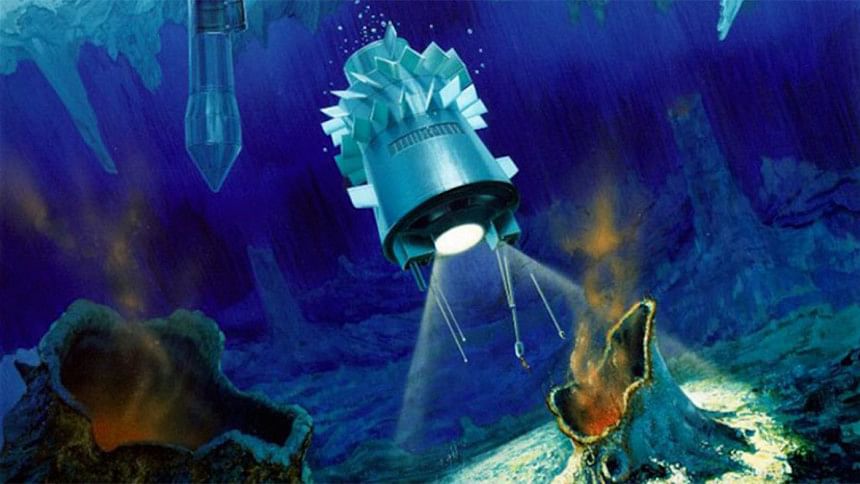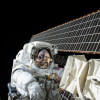Scientists find evidence of alien life under mysterious water world

Oceans on Europa, one of Jupiter's 67 known moons, might have a lot in common with our own oceans, including a chemical balance capable of harboring life, according to a new study released by NASA on Tuesday.
Scientists have been eyeing the mysterious water world as one of the most promising places to find alien life for a while now, and this study suggests they're on the right track, reports Business Insider.
According to the Business Insider, the moon which is only a quarter the size of Earth, is covered in a thick shell of ice. But there is strong evidence that there could be a salty ocean deep beneath its surface.
For the study, scientists at NASA's Jet Propulsion Laboratory compared Europa's potential for producing hydrogen and oxygen with Earth's using the same methods developed to study Earth's oceans, reports Business Insider.
This allowed them to estimate how much hydrogen could get released as seawater reacts with rock formations on the moon.
"The cycling of oxygen and hydrogen in Europa's ocean will be a major driver for Europa's ocean chemistry and any life there, just as it is on Earth," NASA planetary geophysicist and lead author Steve Vance said in a press release.
THE RIGHT BALANCE
Scientists want to get a closer look at how Europa's seawater interacts with deep cracks that are thought to form at the surface of the moon's rocky core.
On Earth, when new cracks form, the new rock reacts with the water, producing minerals and releasing hydrogen. They're looking to see if the same reactions are occuring on Europa.
They're also looking for signs of the ability to support life in Europa's icy exterior — and on this front they've made some solid gains.
Thanks to its scant atmosphere, Europa is constantly bombarded by cosmic radiation which breaks up the chemical bonds of the ice within. Those reactions produce oxidants, a key ingredient for life. Since Europa's surface is being constantly renewed by icy tectonic activity, these oxidants get dissolved in the ocean, where they can react with the hydrogen and other chemicals produced.
As a result of these reactions, the team found, roughly ten times more oxygen exists on Europa than hydrogen. That's roughly the same ratio that rules Earth.
THE CIRCUIT OF LIFE
Co-author and NASA astrobiologist Kevin Hand compared the chemistry of Europa to the circuit of a battery. He likened the oxidants from the ice to its positive end and the chemicals from the seafloor to the negative end.
"Whether or not life and biological processes complete the circuit is part of what motivates our exploration of Europa," Hand said in the press release.
And the next step in answering that question is figuring out how the hydrogen and oxygen, along with other elements such as carbon and nitrogen, interact in Europa's ocean.
NASA is currently putting together a mission slated for the 2020s that would further explore Europa. A "radiation-tolerant" spacecraft would be sent into orbit around Jupiter to take high-res flyby images of the icy moon to learn more about its composition and ability to sustain life.
Source: Business Insider

 For all latest news, follow The Daily Star's Google News channel.
For all latest news, follow The Daily Star's Google News channel. 








Comments